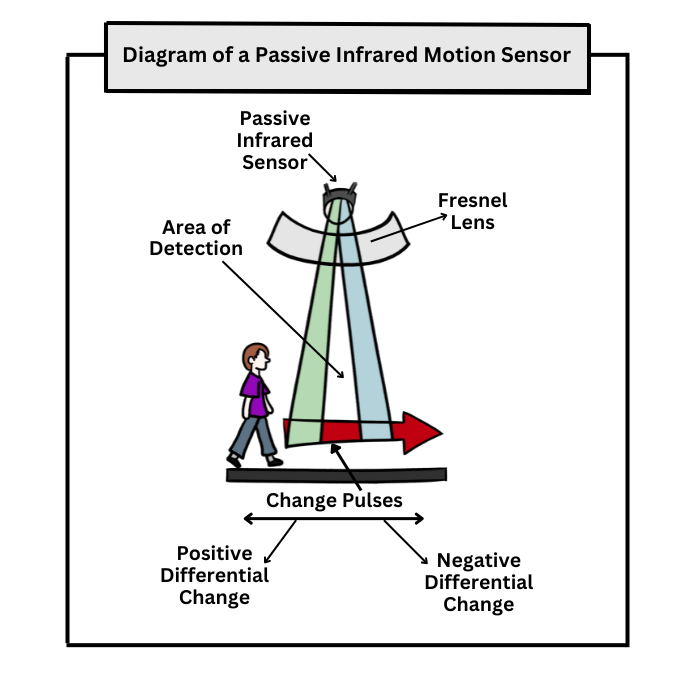A motion sensor unit is used to monitor an area and send an alert if movement occurs. Modern motion sensors have a variety of uses, ranging from security to saving energy in lightbulbs. To do this, the motion sensor unit can incorporate passive infrared sensors.
Passive infrared detects temperature. It looks for infrared light through heat. All objects give off some form of heat, so the detector can use this thermal information to distinguish changes through infrared radiation.
Motion sensor units that utilize passive infrared can be used in dark or light environments. They are extremely useful because they can distinguish thermal information from animals, people and even objects.
At Dexter Research Center, we pride ourselves on our high-performance infrared technology. If you are interested in a motion sensor unit that uses passive infrared, make sure to look at our presence sensor that can be found in our specialty items.
With that said, let’s find out more about why passive infrared can be utilized within a motion sensor unit.
How does passive infrared work in motion sensor units?

To use passive infrared sensors effectively, a motion sensor is designed with two units. Both of these units have a material in them that protects its sensor and reacts to infrared radiation. There is also a lens to help improve the sensor’s overarching focus.
When an environment is consistent or still, the passive infrared sensors will stay idle. This is because they will sense that the infrared is at a balanced level. For instance, it may detect a level of infrared from furniture or interior items.
However, if movement occurs from a heat source, the passive infrared sensors will detect it. When a person passes by the first sensor, it will cause an increase in temperature. This is known as a positive differential change. But then, as the person leaves the area, the temperature will drop. This is known as a negative differential change. The change will then create an alert signal.
Can passive infrared sensors help motion sensor technology?
Passive infrared can enhance motion sensor technology in a range of different industries. For security, passive infrared motion sensors can be used for entry control and exit control, which is why they can be incorporated into security lighting circuits or alarms.
Additional benefits include:
Being easy to use in internal, external, dark or light environments
Creating bespoke control patterns
Utilizing movement rather than a position to provide a security risk alert
Only using a small amount of energy when it is idle
Acting non-invasive as it does not retain personal data
Where else can you use passive infrared sensors?
A motion sensor unit that uses passive infrared is a great addition to an entry control and exit control system. Common forms of passive infrared technology and their benefits include:
- Automatic lights to ensure energy can be saved when rooms are not being used
- Temperature control, including thermostats and thermometers, to save energy
- Automatic doors to help people enter or leave a building and to maintain ventilation
- Dispensers for soaps, toothpaste and wipes to maintain hygiene

The Motion Detector – Presence Sensor is available at Dexter Research Center
It is important that you have the right security or motion detector installed in your building or home. If you are looking for a passive infrared motion sensor unit, we would recommend that you look at our Motion Detector – Presence Sensor. It has sensing functions for up to two feet and is simple to reconfigure for bespoke use.
Not only is it perfect for subsystems, but it has very few costs and can be used inside a smart home as temperature control or for saving energy. It can also be used for safety and security. Make sure to look at our specialty items page if you are interested in learning more about it.
Our specialists at Dexter Research Center can help you!
We are experts when it comes to infrared and temperature-related technology. So, if you are interested in discovering more of our high-quality products, please feel free to contact us at any time. You can call us on +1 (734) 426-3921 or email info@dexterresearch.com to find out more information.